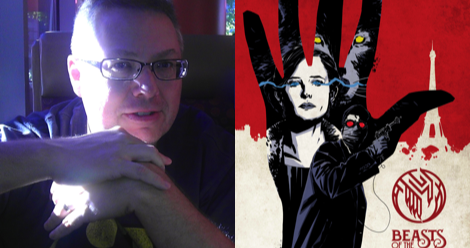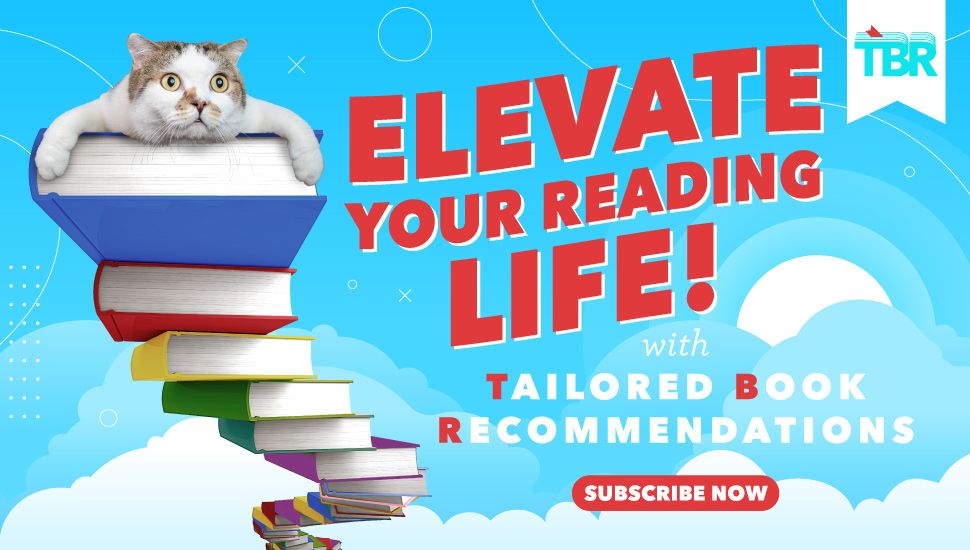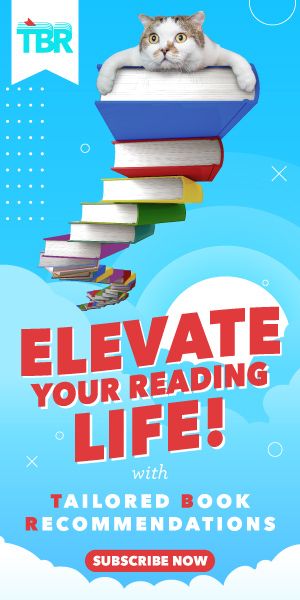
Dinner with Rasputin & Dieselpunk: An Interview With GREEN LANTERN Writer Ron Marz
It’s the age of crowdfunding. Whether you rode the wave early like indie journalist Joey Coleman or jumped on the train after witnessing its successes, services like Kickstarter, Indiegogo, and Patreon have made it easy for creators of all sorts to reach out to just the right audience for their products. This is a huge win for the bookish community as a whole: it gives authors almost complete control of their material, and potential readers a reward for their risk: something unique that mainstream publishers might not distribute otherwise.
But these online campaigns of creator/audience trust are not exclusively for up-and-coming creators. Innovative industry vets are joining in, sometimes with less-than-favourable results. Thankfully, as crowdfunding has become more common, people have calmed all the way down, which allows creators like Ron Marz (you know, that awesome guy who co-created Kyle Rayner, dedicated a chunk of his life to building up the Green Lantern mythos, and worked on a bunch of other comics as well) to bring their newest ideas to life with the help of readers who get to put their money where their mouths are and decide what they want to read. Marz’s next project—already fully funded—is Beasts of the Black Hand, a graphic novel that aims to be historically accurate while playing with magic, supernatural elements, and the undead. Marz was kind enough to sit down and fill me in on all things Beasts of the Black Hand, chatting candidly about what it takes to run a Kickstarter, the benefits of crowdfunding, and why having dinner with Rasputin is probably a terrible idea.
Beasts Of The Black Hand is your next project. The summary reads like a blend of historical fiction and a straight up scare-fest. How do you, as a writer, balance those two very different genres?
You know, I don’t go into it feeling like I have to balance the genres, I just kind of let the story take me where it wants to go. Obviously in this first volume, we have to spend time making the audience comfortable with the characters and the story we’re trying to tell, and the era. There’s monsters, there’s an undead red baron, so my approach to a lot of this stuff is to establish the characters and the setting first, so that it has a veneer of reality to it and then when you put the supernatural stuff on top of it, it’s easier for the audience to accept it.
Why this story?
This story came about because my friend Paul Harding, who is a sculptor for DC Collectibles, wanted to sculpt monsters. This all started as an excuse for Paul to sculpt monsters, because he generally doesn’t get to do it that often when he’s doing superhero action figures. But then Paul came up with a story to go along with the monsters, and that’s where Beasts Of The Black Hand turned into a real story. Paul came to me and said, “Here’s the framework, can we turn this into a real comic?” And obviously, I love the story, I was really drawn to the historical aspects as well, so we hammered it into an outline and then I wrote the script.
How accessible is Beasts Of The Black Hand? Do you have to be a history buff to really get into it?
It should be totally accessible for everybody. It’s a first volume. To me, part of the creative team’s responsibility is to introduce everything to the audience in such a way that the audience doesn’t have to run to Wikipedia. There’s a lot of historical truth to what’s being done in the story, if you realize it great, if you don’t, that’s fine, the story as a whole works whether you know the historical details or not. I’m a fairly huge history buff, and people who are into history will get the accuracy of Rasputin’s assassination, or the accuracy of the Versailles Peace Conference in 1919. But for those who have no real grounding in those events, it’s just part of the story and you certainly won’t feel lost at sea when we get to those points. Part of the writer’s responsibility in any story is to make sure the audience understands the context, so this is no different than a story that I’m completely making up from whole cloth. It’s my responsibility to understand what the audience needs to be swept away with the story.
Why did you choose Kickstarter to fund this project, instead of seeking out traditional avenues?
I think it’s kind of a two-fold answer. I think, obviously, first and foremost, Kickstarter is a way to fund your project. It’s a way to reach out to the audience and have the audience pre-buy what you’re making, and it’s a way for creators to fund their creations. You’re reaching out to the audience who are hardcore fans of Matthew Dow Smith [the artist], Paul, or myself, who will hopefully be more inclined to pledge because we have a track record with them. Certainly the other aspect of Kickstarter is, it’s a great promotional tool to let people know you have a new project.
Does funding through Kickstarter allow you to have more creative freedom than a traditionally-published project would?
Oh, completely. It allows us to tell exactly the story we want to tell, in exactly the format we want to tell it, without anybody looking over our shoulders. Paul came up with the concept and we hammered the story together, then I wrote the script, and then I handed the script to Matt, and he drew it. It was a very simple, very direct process. Anytime you deal with a publisher on the front end of your project, a publisher is going to have input in how you do it. It’s just part of the natural publishing process. But no matter where we took it, it would be creator-owned. Doing a project on Kickstarter means we just sat down and did what we wanted, how we wanted. For good or ill, Beasts Of The Black Hand is exactly what we wanted to be.
The Kickstarter says Beasts Of The Black Hand is going to be a multivolume story. Do you have a clear idea of where it’s going to end?
I don’t know that we have a specific “Here’s where the story ends” aspect to it. We know the next few chapters of the story we would like to tell, but we haven’t really discussed a finite end point. At this point, we just know that there are plenty more stories we want to tell in this world, so we’re going to take it one at a time and keep going.
What are the benefits of having a Kickstarter as opposed to a traditional publisher? Do you feel more connected to your readers?
First and foremost: it was a real learning experience in terms of putting together a Kickstarter, and how much work goes into maintaining the campaign on a daily basis. Everyone tells you, but man, Kickstarter’s a lot of work. You just have to be prepared to donate a month of your life to the campaign, and once the books are prepared, there will be a pretty large fulfillment party. The thing that struck me most about the campaign was the reception and kindness from our colleagues in comics: the people that are our friends and our peers, and people whose work we admire. They came out in such large numbers to support the project and it was tremendously gratifying. The people who do the same thing that we do saw something in the project and put their money where their mouths are. We had people like Dan Jurgens (Superman), Mitch Gerads (Mister Miracle), Peter Krause (The Power Of Shazam)—and a host of others—actually back the project. I think that’s the best compliment that your peers can give you, that they’re actually willing to pay for your work.
If someone were to ask you why they should give Beasts of the Black Hand a chance, what would your top three selling points be?
I think we’ve got engaging characters, many of whom are actual historical figures and obviously we’re sort of embroidering on top of their historical stories. To me, the characters are always number one. If the audience doesn’t care about the characters, there’s no sense in doing any of this. Number two, we have some of the best artwork of Matthew Dow Smith’s career. Matt is a friend I’ve known for more than 15 years, and we’ve worked together off and on over the years. I just love what he’s done on the book and I really can’t envision it drawn by anyone else now. And I think the third thing that I would love people to realize is that this is a labour of love for everyone involved. From me to Paul to Matt to our colourist, and to our publishing company, Ominous Press, which obviously is making this possible, along with our Kickstarter backers. This is, in a very real and direct way, a method that the audience can use to support creators telling the kinds of stories they’re driven to tell.
How do you fit fantastical elements into a historical story? Do you sacrifice the historical aspect a little bit?
Beasts Of The Black Hand is definitely based on history, and we start with the assassination of Rasputin in St. Petersburg. That’s strictly historical, and as far as we can tell, we got pretty close to what actually happened. From there, as we introduce the supernatural elements of the story, the world of Beasts Of The Black Hand starts to diverge a little bit from our world. There’s greater technology, which is being spurred by the supernatural elements. So, for lack of a better term, this is a bit of a dieselpunk story. It’s a little later than steampunk, dieselpunk is the best description of the look and feel of where the story goes.
Rasputin’s daughter sounds kind of badass. How much of that is historically true?
Rasputin’s daughter, who eventually came to be known as Maria Rasputin, was part of European society in the 1920s. She worked as a medium and a dancer, and most interestingly, a lion tamer. The more I found out about Maria, the more I was baffled that I hadn’t heard about her, so Maria Rasputin is a fascinating character in her own right, and of course, we’re giving her supernatural powers.
There are a lot of different things going on in this graphic novel. How do you express so much in comic format? Why not a prose novel?
It’s ultimately part of what we do as creators to establish these characters and make them as real as we can for the audience. In comics, you work in shorthand a little bit, because of space limitations, but the benefit is that we have visuals. So what would take you literally pages of description and action in prose, you can do in just a few panels in a comic. Comics are that magic blending of words and pictures to form a greater whole than you would get out of either of those parts. So we can amplify Maria’s character in a few illustrations, really with a few well-drawn expressions, more than you can in a strict prose story.
As a creator, who is your favourite character to write?
They’re all pieces on the chessboard, and as the creator, you love moving them around, but I think my answer is two-fold. Initially, I just loved writing Rasputin, because he’s obviously a tantalizing figure. We know a bit about him, historically, certainly. And we certainly know exactly what we looked like. And as a creator you extrapolate from someone’s look, someone’s reputation. So I had a ball writing Rasputin in the initial scene of the story. And then as the story goes on, our hero is Oswald Rayner but obviously we don’t know as much about him as we do, say, Rasputin. So there was a little more room to interpret and embroider with his character. His character’s also got a mysterious aspect that we deal with in the graphic novel, so that’s always an attraction as a writer. You can tease the mystery and keep stringing the readers along.
Ideally, do you want this whole story to be collected in an omnibus, or really big deluxe editions?
That’s the ideal end result: we do a big, fat volume that collects everything. But you don’t count your chickens before they hatch. Matt is, I believe, finishing the volume one artwork today. So we’re gonna move right into doing pages of volume two, and we’ll hopefully Kickstart that next year and see how that goes, and we’ll take future volumes as they come. We have a lot of stories to tell in this world and we’ll tell them as long as the audience is there for us.
If you could go back in time and tell a young you something about your life now, what would it be?
I think the biggest thing that I would probably go back and tell myself, when I was a journalist, is that so much of my experience as a journalist comes into play doing comics. The lessons and the necessities of journalism as well as learning proper writing style, doing pyramid-style articles, and memorizing the AP stylebook. In journalism, you have a finite amount of info and space. And your job as a writer is to package that information in the given space. Comics are essentially the same thing. A certain number of pages to fit information in. Understanding space limitations and utilizing them as a benefit rather than a weakness is exactly the same in journalism or in comics.
If you could sit down and have a full 12-course meal with anyone from Beasts Of The Black Hand, who would it be?
My knee-jerk response is Rasputin because he was obviously a fascinating character, but since everybody was trying to poison him, eating a meal with him is not the wisest choice you can make. So I guess maybe Maria Rasputin would be a safer answer.
Is Beasts Of The Black Hand going to be available for people who didn’t participate in the Kickstarter?
If you missed your chance to get the graphic novel on Kickstarter, you can preorder on Indiegogo. The plan is that we’ll print a certain number of copies—whatever seems to make sense—but we’ll certainly have enough copies on the Ominous Press website and for conventions. There will be ways to get the book after we go to press, but we want to make sure we have enough printed, and enough on hand, to do a volume two, and have additional copies and maybe a two-pack.
Beasts of the Black Hand sounds like it’s going to be a blast, and Marz’s enthusiasm for the project is tangible. I can’t wait to get my hands on the physical copy, and want to personally thank Marz for his patience and graciousness, sitting down and speaking with me about his latest endeavour.











